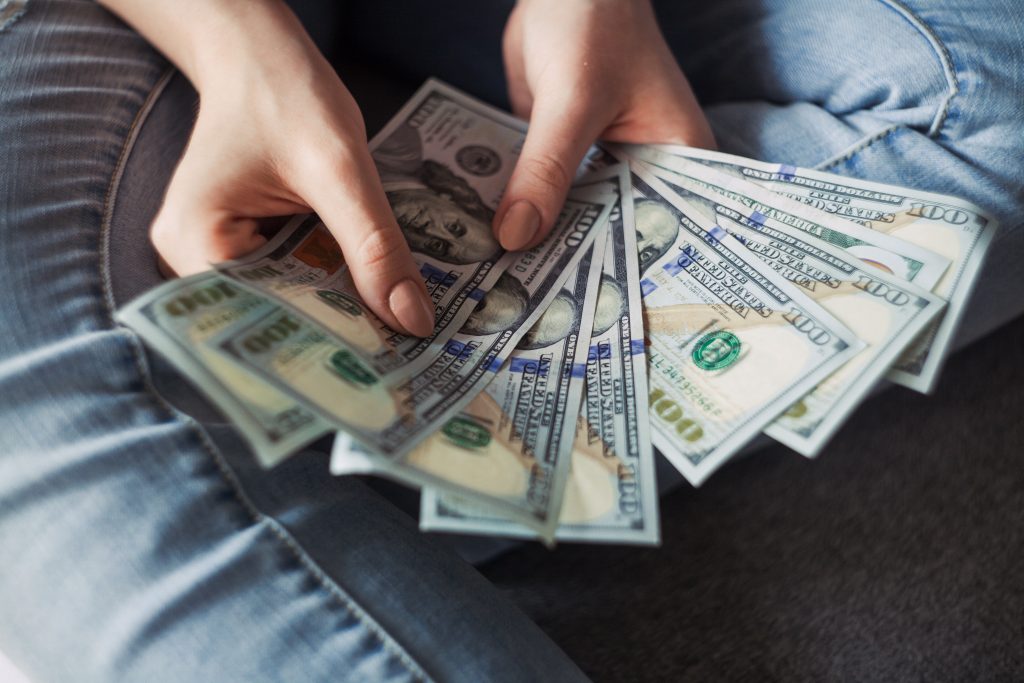For new investors, one of the most common questions is ” How much does it cost to flip a house successfully? ” The answer is usually not straightforward. Planning budget s for real estate projects can be overwhelming, as investors will need to consider and include many different variables. A property’s condition, the area it is located in and the cost of labor and materials needed for the project will have a big impact on the budget you set and whether or not you make money flipping houses.
Keep reading to learn our advice on how much money you need to flip a house successfully:
The Importance of Purchase Price
The initial cost to acquire a fix and flip investment property will be the purchase price and will make up the most significant portion of your overall project budget. As of Q4 2021, the median sale price in the US was 408,100, however, this was highly dependent on location with some states going higher and others lower. The size of the average down payment needed to acquire a property will be similarly varied state by state.
Your acquisition cost will further guide the creation of the rest of your budget – including setting any deposit or transfer duty needed to conclude final closing. To estimate this cost, a fix and flip investor can make use of an ROI calculator , which allows them to evaluate the financials of properties more thoroughly. When you are looking for properties to purchase, you should really aim to “buy the cheapest house in a nice neighborhood”.
The general guideline for a first-time fix and flip investment is that you should aim to make up to 20% ROI.
Knowing the 70 Rule Is Key
The 70 Rule is one of the most popular guidelines that real estate investors use to workout a profitable purchase price when flipping homes. It provides ballpark figure of what a house flipper should offer on the house. The formula is relatively simple.
Maximum Offer Price = After Repair Value * 70% – Repair Cost
With this formula, the After Repair Value (ARV) is what you predict the house will be worth, after completing the renovations. The best way to predict ARV is using comps. You can learn more about how to get comps on a house in this article, or you can simply use New Silver’s ARV Calculator.
Understanding Renovation And Holding Costs
Here comes the tough part – projecting costs for the renovation of a fix and flip can be a murkier process, which is why your primary goal should be finding accurate price quotes and partnering with a contractor if needed.
Having a good contractor on board will go a long way in bringing down the total costs of the project while retaining the quality of the rehab. Buyers will notice quickly if the quality isn’t there and cutting corners will affect the number of offers you ultimately get. The contractor is the most essential part of the flipping process and directly impacts how profitable the project will be at the point of sale, so make sure to vet yours carefully.
Renovation costs will include labor, the cost of materials needed, holding costs, and any other maintenance expenses that apply to the property while you own it. Other costs real estate investors will face after the initial rehab is complete can be agent commissions, ongoing loan repayments, marketing costs to list and advertise the property and final closing costs.
These closing costs can be as high as 5% of the overall purchase price.
Know Your Financing Costs
Some real estate investors choose to acquire properties using cash outright, but this is not possible for everyone. Fix and flip investments are more commonly funded by hard money lenders and private money lenders.
A hard money lender will offer you an as asset-backed loan, meaning that the loan value is based on the value of the property which acts as collateral in the case of loan default. A hard money loan can be approved faster than traditional loans from banks can, allowing investors to close in as little as a week after being approved amongst other benefits. Also, if you do apply with traditional lenders, there is a strong possibility that your appplication will be denied, due to the risks involved in a typical house flip.
If you opt for a hard money lender instead, it’s important to note that these lenders will still require you to put some money down. Usually, the down payment will be in the region of 20%, but it could be more or less depending on your real estate investment experience.
If you’re an aspiring real estate investor with a lack of personal funds, you can also try teaming up with another investor that has the financial capacity to back the project. Just remember that when you partner with a private lender, you will have to bring something of equal value to the relationship.
Lastly, you can also learn more about how to flip houses with other people’s money here.
Finishing The Budget
With the financing section of the budget settled, you can move on to calculating the after-repair value (known as the ARV) of the property you have selected. The ARV is the final value of the property after all renovation has been completed Bear in mind that lenders like hard money lenders will have limits on the ARV amount they are willing to fund.
It’s important to compare your ARV to recent, comparable home sales in the area you have chosen. Knowing your calculated ARV will assist you in understanding the maximum loan amount you would be able to get from a lending institution.
Final Thoughts
So, how much money do you need to flip a house successfully? The answer is that it depends. Average property down payments, prices, and renovation costs will vary depending on where it is located. Many investors depend on a lending institution like a hard money lender or partner with another investor in order to fund their fix and flip project. There are a lot of variables that will go into your budget when you create this plan.
However, using the advice in the article you can better judge what your budget will need to cover. Lastly, you can also take a look at our detailed house flipping cost breakdown to for even more insights into the costs involved when flipping a home.



